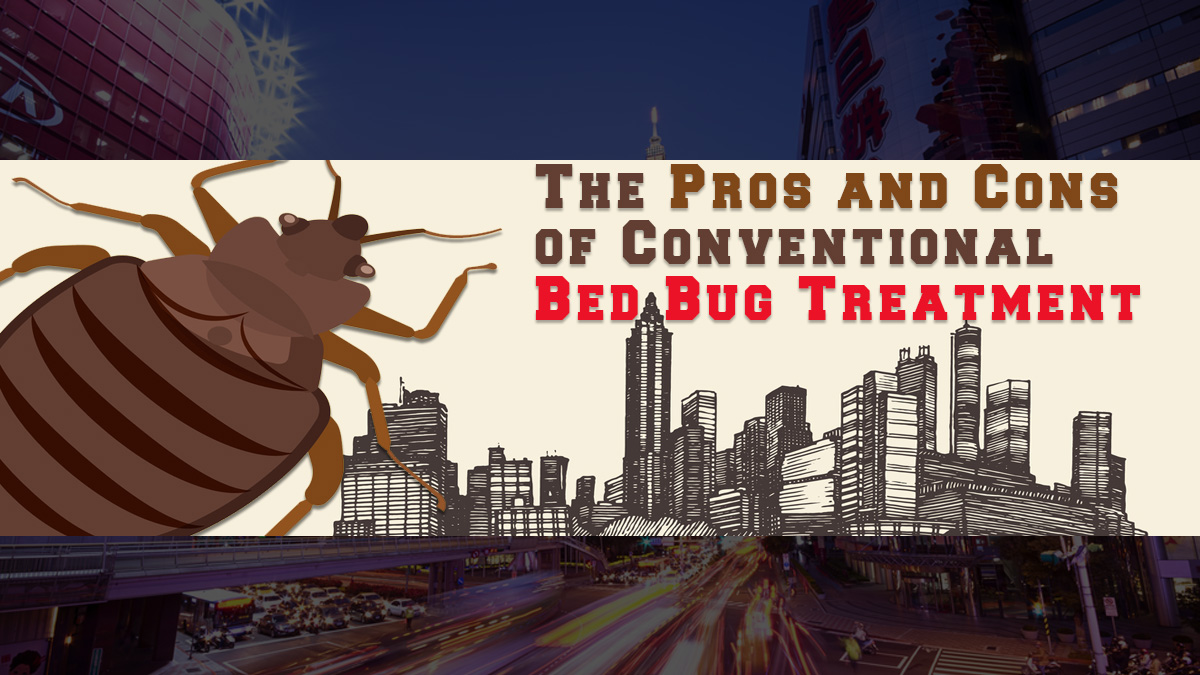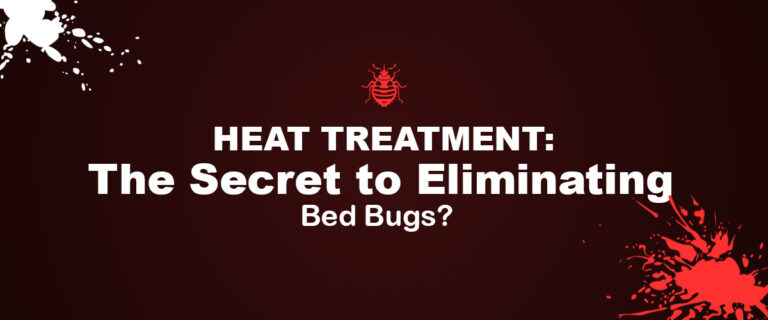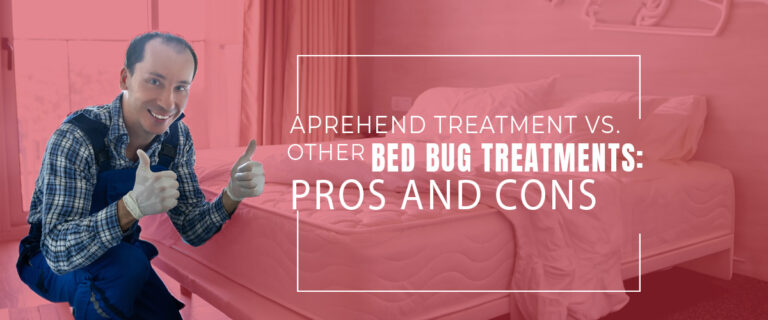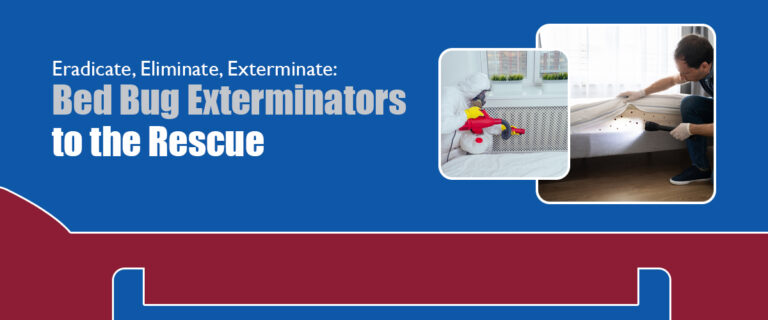The Pros and Cons of Conventional Bed Bug Treatment Methods
Have you had the worst nightmare involving bed bugs? Bed bugs are an annoying household nuisance that can harm your health and affect your sleep and comfort. Not only that, but it also ruins your record as a tenant or landlord in most cases in the US.
Meanwhile, preventing infestations from spreading and protecting people’s and pet’s health and well-being is essential. Conventional bed bug treatment methods include various chemical and non-chemical options that pest control professionals widely use. However, these methods have pros and cons, and alternative bed bug treatment methods are becoming increasingly popular as people seek safer and more environmentally friendly options.

Pros of Conventional Bed Bug Treatment Methods
They are a typical household nuisance that may be upsetting and annoying. Fortunately, several conventional bed bug treatment methods can effectively eliminate bed bugs from your home. Here are some pros of traditional bed bug treatment methods:
1. Effectiveness in killing bed bugs
Traditional insect extermination techniques work well. Direct application of chemical pesticides, dust, and fumigation are methods for treating infested regions. Vacuuming and steam cleaning can also effectively remove bed bugs and their eggs. Furthermore, these methods have been tested and proven effective in eliminating bed bug infestations.
2. Availability of treatment options
Various chemical and non-chemical options are available for conventional bed bug treatment. It allows pest control professionals to choose the best method for each case. This flexibility allows for a customized approach to bed bug treatment.
3. Familiarity with treatment methods for pest control professionals.
They are trained and experienced in conventional bed bug treatment methods. It makes them efficient and effective in their application. This familiarity also allows for a quicker response time to bed bug infestations.
4. Lower cost compared to alternative treatments
Conventional bed bug treatment methods are generally cheaper than alternative treatments. It makes them a more accessible option for those who may not have the budget for more expensive treatments.
Overall, conventional bed bug treatment methods are effective, flexible, and cost-effective options for eliminating bed bugs from your home.

Cons of Conventional Bed Bug Treatment Methods
If you have a bed insect infestation, consider traditional treatment methods like pesticides and heat treatments. However, before deciding, you should know the cons of conventional bed bug treatment methods.
1. Potential health risks to humans and pets
Chemical insecticides and dust can be toxic if misused or in large quantities. Fumigation can also pose a risk of fire or explosion if not done correctly. Following all safety precautions and using protective equipment when using conventional treatment is essential.
2. Limited effectiveness against bed bug eggs
They tend to deposit hundreds of eggs, some of which may hatch and spread following treatment. Furthermore, multiple treatments may be necessary to eliminate bed bugs, which can be time-consuming and costly.
3. Resistance of bed bugs to certain pesticides
Bed bugs can develop resistance to certain pesticides, making them more challenging to eradicate. Moreover, it can lead to the need for more potent and toxic chemicals, which can pose a greater risk to humans and pets.
4. Need for multiple treatments to eradicate bed bugs.
Multiple treatments may be necessary to eradicate bed bugs with conventional treatment methods. Particularly for more extensive infestations, the treatment can be time-consuming and expensive.

Alternative Bed Bug Treatment Methods
Common household pests like bed bugs can be challenging to eliminate. While conventional bed bug treatment methods are effective, alternative plans can be just as effective, if not more so. Some alternative bed bug treatment methods are:
1. Heat treatment
It occurs at high temperatures to eradicate bed bugs and their eggs. This method is effective because bed bugs cannot survive in temperatures above 120 degrees Fahrenheit. In addition, specialized equipment can raise the temperature of the infested area to the required level.
2. Cryonite treatment
Cryonite treatment uses carbon dioxide as dry ice to freeze and kills bed bugs. This method is effective because it can penetrate hard-to-reach areas and kill bed bugs and their eggs on contact.
3. Steam treatment
It involves using high-temperature steam to kill bed bugs and their eggs. This method is effective because it can penetrate deep into fabrics and other materials where bed bugs may be hiding.
Overall, alternative bed bug treatment methods can be just as effective as conventional methods and may offer additional benefits, such as being chemical-free.
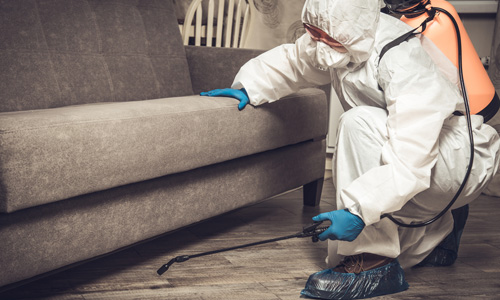
Common Conventional Bed Bug Treatment Methods
A frequent problem in homes, bed bugs can cause discomfort and anxiety. When dealing with an infestation, you may wonder about the most common conventional bed bug treatment methods. These are the following methods commonly used by exterminators to get rid of bed bugs.
1. Insecticide sprays
It can be applied directly to infested areas to kill bed bugs. Moreover, these sprays can be chemical or natural and effectively eliminate bed bugs.
2. Dust and powders
Dust and powders can be applied to infested areas to kill bed bugs. These products dehydrate the bed bugs and can effectively eliminate them and their eggs.
3. Fumigation
It involves using gas to kill bed bugs and their eggs. This method is effective because it can penetrate deep into fabrics and other materials where bed bugs may be hiding.
4. Vacuuming and steam cleaning
Vacuuming and steam cleaning can effectively remove bed bugs and their eggs from your home. Furthermore, these methods work by physically removing bed bugs and their eggs.
Overall, conventional bed bug treatment methods effectively eliminate bed bugs from your home. The degree of the infestation and other factors, including your condition, will determine the best course of action.

Health Risks of Conventional Bed Bug Treatment Methods
Despite their effectiveness, traditional bed bug removal techniques can harm people and animals. You should know the following potential health hazards of conventional bed bug treatment methods.
1. Exposure to toxic chemicals.
Inappropriate use or excessive use of chemical pesticides and dust might be detrimental. Exposure to these chemicals can cause health problems such as headaches, dizziness, and nausea.
2. Respiratory problems
Chemical insecticides and dust can also cause respiratory problems such as coughing and wheezing. It is especially true for those with pre-existing respiratory conditions.
3. Skin irritation and allergic reactions
Chemical insecticides and dust can cause skin irritation and allergic reactions in some people. Furthermore, it can lead to itching, redness, and swelling.
4. Risk of fire or explosion with fumigation
Fumigation involves using gas to kill bed bugs and their eggs. Moreover, this gas can be flammable and pose a fire or explosion risk if not handled correctly.
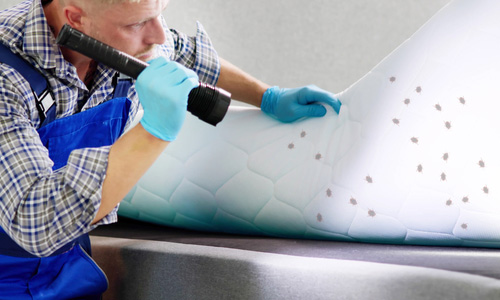
Choose the Right Treatment
Bed bugs are a common household pest that can be difficult to eliminate. Conventional bed bug treatment methods effectively kill bed bugs, and various treatment options are available. These methods are generally cheaper than alternative treatments; pest control professionals are trained and experienced. Traditional bed bug treatment methods have drawbacks such as potential health risks to humans and pets, limited effectiveness against bed bug eggs, bed bugs’ resistance to certain pesticides, and the need for multiple treatments to eradicate bed bugs. When selecting a bed bug treatment method, it is crucial to consider all variables, including effectiveness, cost, and potential health risks. Furthermore, consultation with a pest control professional can provide expert advice and guidance on the best treatment options for each case.

